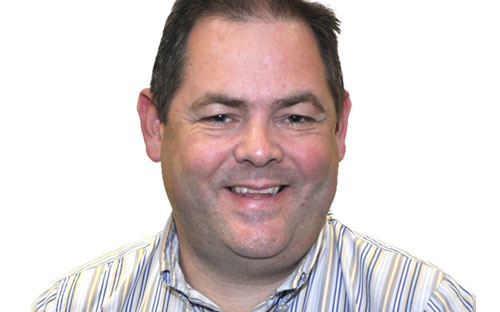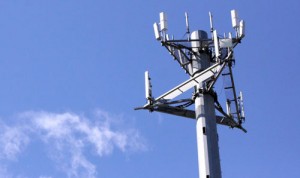
By Tim Parle
After a series of false starts, humbly acknowledged, the Independent Communications Authority of SA (Icasa) yesterday came out with a new proposal to allocate the sought-after spectrum in the 2,6GHz band and, rather progressively, spectrum in the 800MHz band, too. Previous licensing attempts centred on the 2,6GHz and 3,5GHz bands, but Icasa has correctly chosen to remove the distraction and shelve discussions on the latter for the time being.
There are several positive aspects to Icasa’s revised approach:
— The process seeks to address the dimensions of capacity and coverage requirements for both rural and urban situations. This will be achieved through the use of two bands harmonised with international standards.
— There is the desire to allow as many entities as possible to access the bands. Icasa has recognised there is a balance needed between the number of operators and their allocations: too many operators means too much wasted bandwidth in the form of guard bands, and each user needs sufficient channel width to be able to provide high bandwidth services.
— There are bands reserved for new operators, defined as those that “have no spectrum assigned in any of the designated IMT [mobile cellular] bands”. This will immediately exclude Telkom, Vodacom, MTN and Cell C but, depending on the definition used, could exclude Neotel and iBurst parent Wireless Business Solutions, too. This gap could provide an entry point for a savvy foreign operator.
— Icasa is promoting both an open-access model and a wholesale model, allowing for optimum use of the spectrum and new, innovative business models. State-owned Sentech receives special mention as one of the wholesale operators in line with the company’s announced national wireless broadband network plans.
With the new plan and the reassignment of Sentech’s spectrum, SA’s plan will now be aligned with the harmonised ITU option 1. Icasa had previously called this approach “untenable” given Sentech’s allocations, but has fortunately now seen sense. This means that FDD (frequency division duplex) networks will be possible and SA will be more aligned with international allocations, meaning off-the-shelf equipment can be used here. (For more information, the reader is referred to the BMI-T Navigator article South Africa and the 2.6GHz Band Plan – Isolation or Harmonization, July 2009.)
Icasa has also proposed to use the “managed spectrum park model”, an approach that was pioneered by New Zealand’s Radio Spectrum Management (RSM) organisation (which interestingly enough falls under the ministry of economic development). The RSM has implemented the managed spectrum park concept for the 2,5GHz band in much the same area as Icasa.
 The New Zealanders say it caters for “a situation in which a nationwide spectrum right is not required, but likewise a general user licence would be too open as services require some coordination or sharing”. It is intended for local and regional services, and seeks to encourage a flexible, cooperative, low-cost and self-managed approach to allocation and use.
The New Zealanders say it caters for “a situation in which a nationwide spectrum right is not required, but likewise a general user licence would be too open as services require some coordination or sharing”. It is intended for local and regional services, and seeks to encourage a flexible, cooperative, low-cost and self-managed approach to allocation and use.
What they have done is take a chunk of spectrum in the middle of the band and worked on the basis that licences are allocated on a “first-come, first-served basis”. There are arbitration provisions to encourage spectrum sharing, and the “use-it-or-lose-it” approach that Icasa has mooted but never implemented is enforced. Icasa’s view is that this spectrum will be on a self-managed basis. The details remain to be seen, but it certainly sounds progressive.
The 800MHz (790-862MHz) spectrum is currently occupied by the upper few channels of analogue television, namely channels 61 through 69. A quick analysis of some records (that might admittedly be out of date) shows that there are at least 172 TV channels operating here nationwide. To access this spectrum, all these TV channels will need to have been migrated to digital channels, and to frequencies lower than 800MHz. We need this to happen, but to be achieved by end 2013 will be challenging. Only then can we begin to reap the benefits of the “digital dividend”.
Looking at the roll-out obligations Icasa has proposed, the authority has done the right thing to add more parameters around the coverage requirements. However, the requirement for 70% geographic coverage, of which half must exclude the main metros, will be a challenge considering the huge national parks, the Karoo, the Kalahari and so on that cover a vast portion of the country. Perhaps a fuller definition will follow in the invitation to apply (ITA) for spectrum, or maybe we’ll have to leave this one to the lawyers.
The requirement to cover 50% of the population in four years at 2,6GHz is no mean feat either and, even at twice the previously proposed period, will put heavy strain on searches for new base station locations and existing tower sharing arrangements.
There are many other aspects of the announcements that still need to be unpacked. The 30% HDI (historically disadvantaged individuals) ownership component seems to be unchanged from the previous exercises, and we know that this will immediately leave one contender seeing red. On the other hand, Neotel appears to have been given a head start in the process, having been allocated spectrum in the 800MHz without going through the whole ITA process.
So, overall, this looks like progress. Comments are due by the end of January 2011. But there are still big questions to be answered. Will this model resonate with the operators? Will their bids attract the right revenues for the regulator? Will there be sufficient bids? Will the process yield sufficient bandwidth for one or more of the incumbent operators to keep with future mobile broadband demand?
As we enter a new year, a year in which the Olympic Games take place, let’s hope we’ve seen the back of all the false starts.
These announcements put pressure on the need to get the digital migration underway and completed. We need strong governance and effective management of the processes involved to meet Icasa’s well-stated and necessary goals of higher speeds for broadband consumers, lower unit costs, increased competition, improved broadband to rural areas and increased levels of employment.
Perhaps we’re on the way to a gold.
- Tim Parle is senior telecoms consultant at BMI-TechKnowledge
- Subscribe to our free daily newsletter
- Follow us on Twitter or on Google+ or on Facebook
- Visit our sister website, SportsCentral (still in beta)

